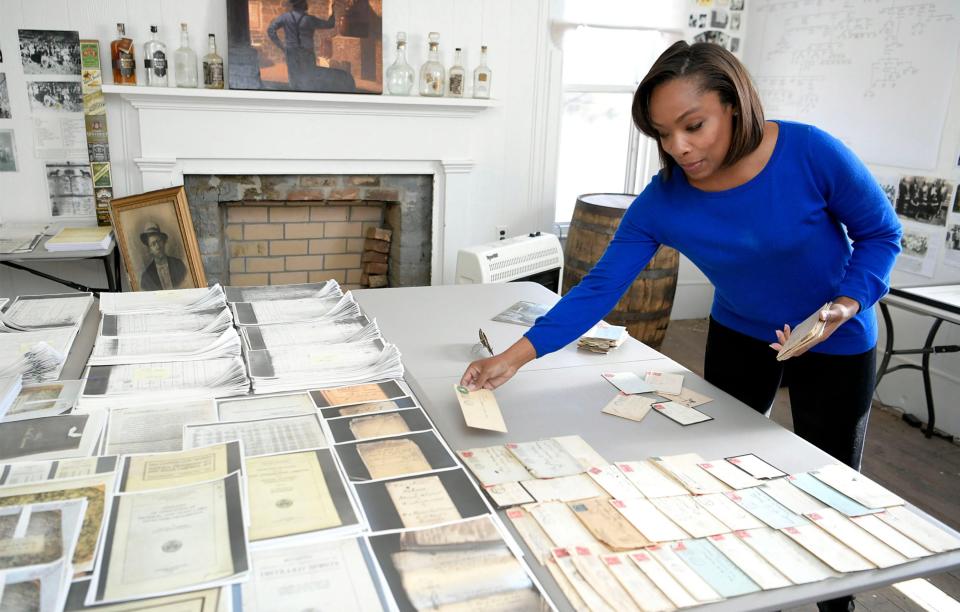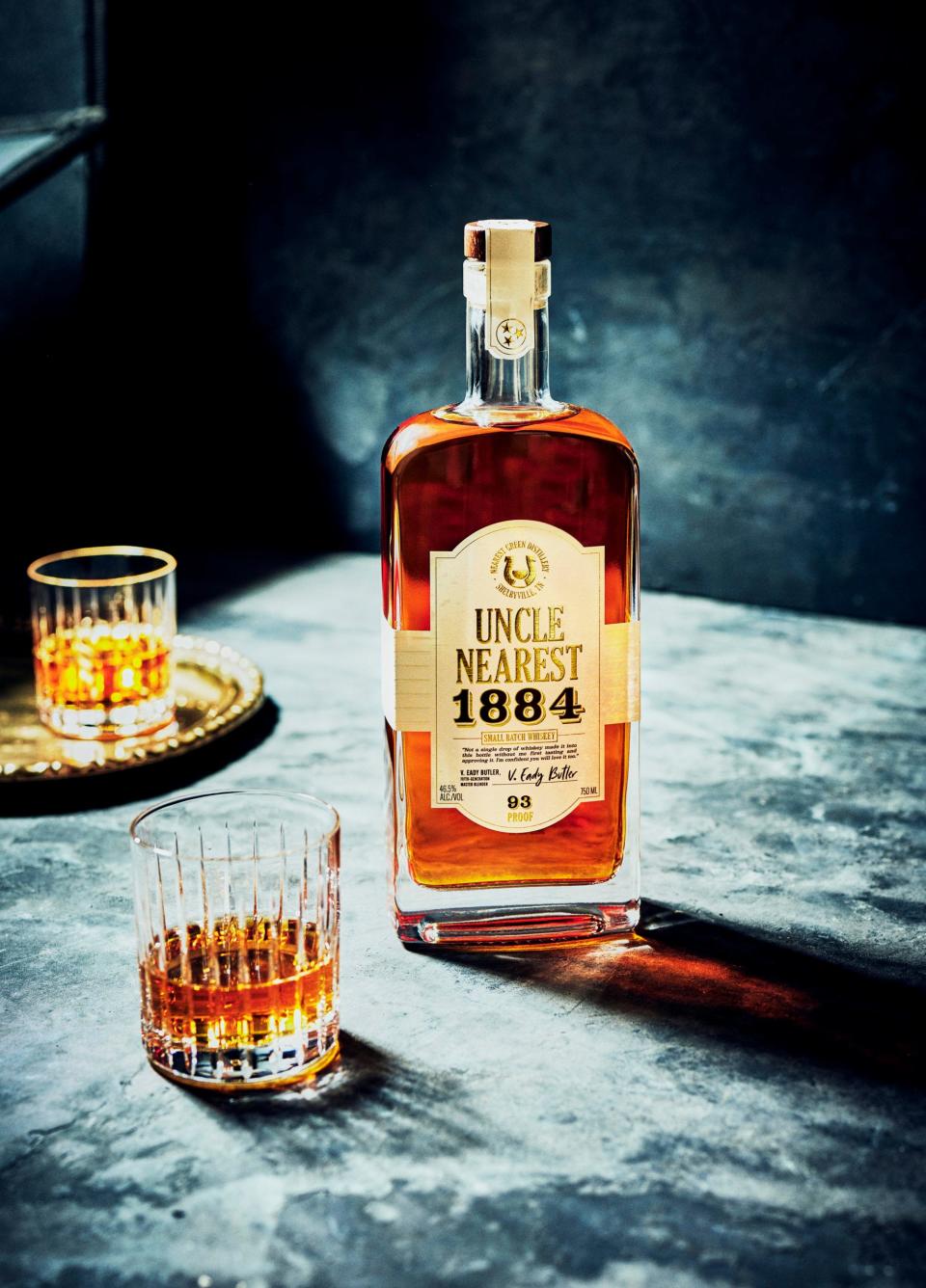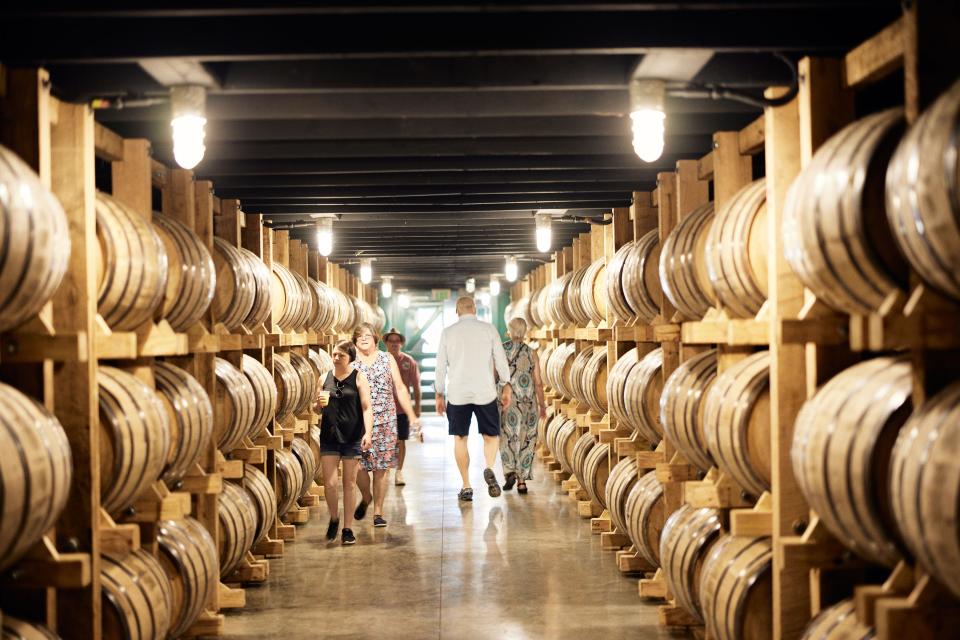Why the founding father of Tennessee whiskey isn't who you think it is
- Oops!Something went wrong.Please try again later.
The story of Uncle Nearest, née Nathan Green, is the story of Tennessee whiskey itself.
The distillery that bears his name is an experiential journey through his accomplishments. The Nearest Green Distillery is at once a temple to Tennessee whiskey, and a monument to the accomplishments of women and a once-enslaved Black man who became improbably influential in the South.
Uncle Nearest CEO Fawn Weaver learned of Green through a 2016 New York Times story: "Jack Daniel’s Embraces a Hidden Ingredient: Help From a Slave."

The article laid bare to a national audience how Jack Daniel, whose name has been stamped on his iconic black label for as long as his liquor has been on shelves, learned to make whiskey from an enslaved Black man.
Not only did Green make whiskey, he was the best distiller around, according to local lore. That was in part because he filtered his liquor through sugar maple charcoal in what became known as the Lincoln County process, used in nearly all iterations of Tennessee whiskey.

"Some call him the founding father of Tennessee whiskey," said Jason Morgan, tour guide for the Nearest Green Distillery.
Weaver, an author living in Los Angeles, chose Lynchburg, Tennessee — the home of the Jack Daniel Distillery — as the site to celebrate her 40th birthday. In an effort to investigate Green's life and his relationship with a white whiskey icon, she toured Jack Daniel's. Then she toured it again. And again. She pored through books in the local library. She began contacting Green's descendants.
One was Debbie Staples, Green’s great-great-granddaughter, who recalled her grandmother "Mammie" describing a Black forebear who used to make whiskey.
"Oh, yeah?" her grandchildren would respond skeptically, Staples told a Nashville Tennessean reporter.
WHISKEY TRAIL
TRAVEL TIP #1
Plan your trip. Consider an itinerary. Find curated trips and trail routes at tnwhiskeytrail.com/trip-planner, including Waterfalls and Whiskey, Urban Getaway and Outdoor Adventurer. Or pick your trail visit based on region.
For years, those tales were told only on front porches, becoming part of Lynchburg lore. But when Weaver talked to Green's descendants, she learned the best way to enshrine Green's contributions to Tennessee whiskey was for him to finally have his very own label, just like Jack Daniel.
She did that. Then she built a distillery bearing Green's name outside Shelbyville, just 30 minutes from Jack Daniel's. In doing so, she helped establish Green's place in whiskey history — permanently and boldly.
"She's just like capturing lightning in a bottle," Morgan said of Weaver. "She's that explosive in that her energy is just unreal."
7 things to see at Nearest Green Distillery
When you tour the Nearest Green Distillery, expect to be moved. Weaver's deft storytelling permeates the grounds.
Watch out for these details when you visit this temple to the "founding father of Tennessee whiskey."
The concession stand: It's stocked only with food made or invented in Tennessee, Morgan said. That includes cotton candy, invented by a dentist, and Mountain Dew, which Morgan said was created to take the sting out of moonshine.
The alcohol-free speak-easy: Behind a door hidden in the concession stand is a speak-easy that serves not a drop of alcohol. Morgan claims it's the first non-alcoholic speak-easy in the world. It was created in honor of Weaver's parents, both teetotalers.
The speak-easy's creaky floorboards: Certain floorboards creak when you step on them, and that's by design. They're meant to draw your attention. Look closely at the boards to see quotes from female civil rights leaders, including Ida B. Wells.

The speak-easy's design: During the women's rights movement from 1848-1917, women couldn't meet just anywhere. They had to gather in safe, alcohol-free spaces such as pharmacies and churches. The speak-easy is designed to reflect that.
The number of seats at the speak-easy bar: There are 18 seats at the bar in the speak-easy, and 18 more in the barroom. That number represents the age of consent, which female reformers campaigned in 1885 to raise to 18.
The number of seats in the entire speak-easy: Combine the barstools and barroom seats, and that's 36 chairs. Tennessee became the "Perfect 36" in 1920 when it was the final state needed to ratify the 19th Amendment giving women the right to vote.
The new Humble Baron bar: This newly opened cocktail destination on the grounds of the Nearest Green Distillery is home to a 525-foot-long showpiece bar, the longest in the world. It showcases Black-owned spirits from around the world.
Learn more about Nearest Green Distillery and Uncle Nearest Whiskey at unclenearest.com.
This article originally appeared on Nashville Tennessean: Nearest Green Distillery: Meet Tennessee whiskey's founding father

